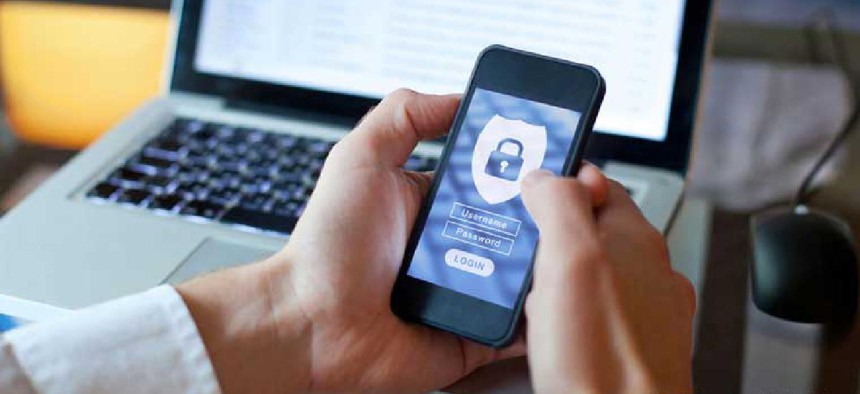Essential public services hinge on secure remote access


Connecting state and local government leaders
Agencies working to ensure robustly secure pathways to IT while balancing worker productivity during the pandemic should use the opportunity to secure remote work capabilities going forward.
On March 17, the Office of Management and Budget issued a mandate (M-20-16) instructing agencies to “maximize telework across the nation for the Federal workforce while maintaining mission-critical workforce needs.”
Most state governments, if they had not acted already, soon followed these recommendations to implement work-from-home policies to curb the spread of the coronavirus. This has been an abrupt adjustment for all public-sector workers, but especially for those in state and local government -- where only 4% participated in telework prior to the coronavirus crisis, according to Pew Research.
Today, over three-quarters of Americans are living under state or local stay-at-home mandates or advisories, and the essential services provided across the public sector are being leaned on more heavily. It’s certainly not business as usual, but business continuity remains an urgency.
The impact of coronavirus on the public sector workforce
Amid unprecedented challenges, public-sector organizations are having to adapt at breakneck speed to maintain important services, such as:
- Education: Thousands of K-12 schools, colleges and universities are shifting to large-scale remote learning for the first time, making the ability to securely deliver these activities is crucial, not just for helping students advance, but for enabling teachers to provide the support students need.
- Federal government: Mass telework has strained agencies’ networks and systems as employees access virtual private networks and other software to conduct their work remotely. The Cybersecurity and Infrastructure Security Agency recently issued new emergency guidance describing how federal agencies can safely navigate the surge in telework and released interim Trusted Internet Connections guidance to address remote workers connecting to agency-sanctioned cloud environments.
- Department of Defense: Led by CIO Dana Deasy, DOD’s Teleworking Readiness Taskforce is working to rapidly respond to an unprecedented strain on its networks brought on by a “maximum telework” policy.
- Local governments: Municipalities provide an array of services and are extremely under-resourced. The ability to move essential services like call centers (311, 911, etc.) and other resources to remote environments is critical to maintain stability and order.
Enabling remote work, maintaining productivity and security
Supporting a rapidly expanded remote workforce requires additional security controls and considerations. Agencies must enable remote access sessions and pathways to IT resources while maintaining high degrees of security and compliance. Unfortunately, many government agencies have legacy IT solutions in place that hamper the move to telework.
Secure remote access is fundamental for enabling remote workforce productivity. Yet, even during “ordinary” times, remote access ranks as one of the top attack vectors. The coronavirus crisis is making it even easier for threat actors to find and exploit inadequately secured remote access pathways. And, with all the recent changes and stresses, new remote workers are easy prey for phishing and spear phishing attacks that steal user identities, credentials and access rights.
While agencies are operating under a sharply condensed timeline for making crucial IT and security decisions, they must still take the step of scoping their environment.
Key considerations for secure remote access
Here are some questions agencies should consider when establishing a secure remote access environment:
- Users: Who are the users: employees, vendors, students, the general public? Are their credentials secured and managed in accordance with security best practices? For instance, secure remote access solutions should eliminate the need for privileged users -- whether internal or third-party -- to remember or share credentials for the systems they need to access.
- Devices: What kind of devices are users on? Are they personal devices or government-owned and provisioned? While government-deployed resources can be robustly hardened and controlled, personal devices are often not subject to the same security scrutiny, making it impossible to mitigate the threats they pose to a government network when they are connected and unmanaged.
- Access: What does each user need to access, such as applications or databases? What is appropriate for users to do with that access? Is some of this access privileged? Is it clear when the network is being accessed, by whom, and for what purpose? Compromised privileged access can quickly lead to a worst-case security scenario, so it’s critical that the right access is dialed in for each user, and there are robust protections and auditing around it.
- Applications/services: What applications and services do employees need to do their jobs? Are they cloud accessible? Is IT providing those tools/resources, or can users self-provision what they need? IT should never allow an employee to self-provision a remote access tool. Identity and access management, privileged access management and application control solutions are important technologies to ensure the right access is provisioned and application functions are controlled at a granular level.
Going forward: Security considerations for a remote workforce
It appears that the COVID-19 pandemic will compel remote work en masse well into the summer, and maybe beyond. Communities across the country are depending on government agencies to continue to provide valuable services, while minimizing the risk of virus transmission. More than ever, agencies must ensure robustly secure pathways to IT while balancing worker productivity. While the pandemic is highlighting this need now, it should be a standard approach for agencies looking to protect assets as they provide remote work capabilities going forward.
NEXT STORY: Pandemic response surfaces security gaps




